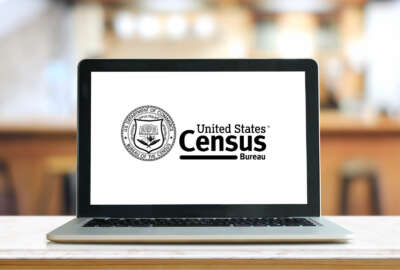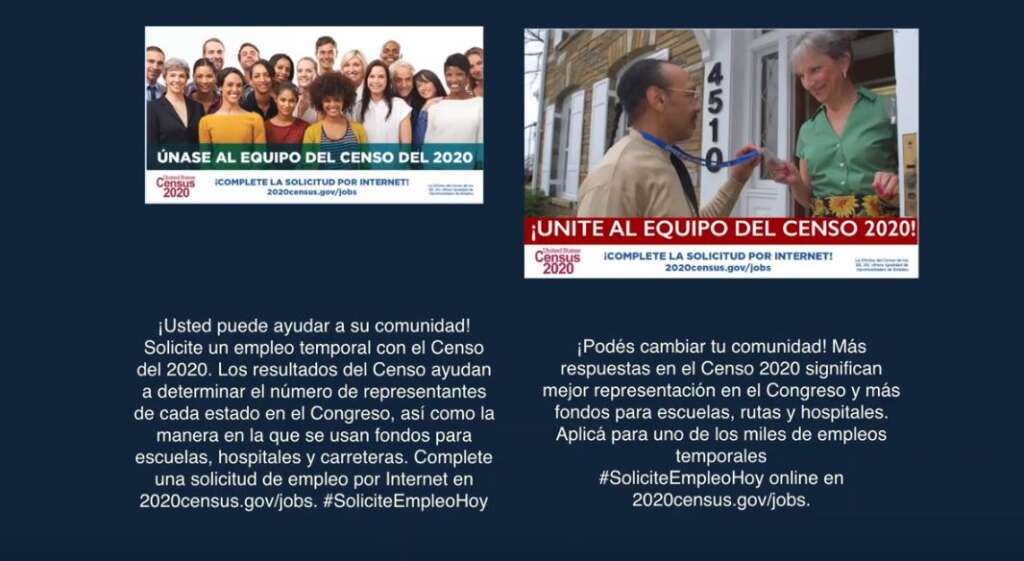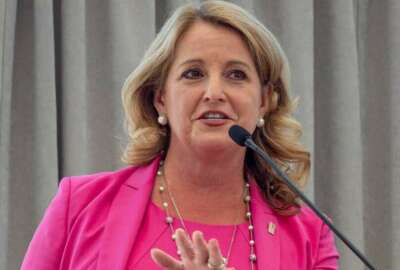
Census Bureau showcases data projects to optimize 2020 population count
The Census Bureau and its partner agencies hold a treasure trove of data, but continue to recruit outside talent to parse that data into valuable insights.
The Census Bureau and its partner agencies hold a treasure trove of data, but continue to recruit outside talent to parse that data into valuable insights.
With this year’s sprints focused on optimizing the U.S. workforce and the 2020 census count, teams presented their data projects at the bureau’s headquarters in Suitland, Maryland last week, with five of the teams receiving $20,000 in prize money.
A team from Arlington-based business management consultant firm Motivf, for example, demonstrated its efforts to improve trust in the 2020 count among hard-to-count demographics.
Jaymes Cloninger, the managing director behind Motivf’s consumer culture census marketing project, said at least seven of the Census Complete Committee volunteers they spoke with had identified trust in the decennial count as a top concern for hard-to-count demographics.
Between that feedback and industry data, the team found that many hard-to-count populations ranked corporations as more trustworthy than government agencies.
Working with a database used by multi-national companies for marketing outreach, Motivf drilled down on data about ethnicity, language, income, education, age and gender to get a better sense of what outreach methods work best for each demographic.
“We were able to use what basically Coca-Cola would use to reach out to a hard-to-count community,” Cloninger said.
In developing this marketing strategy, the team also folded in recommendations from the bureau’s National Advisory Committee on how to best contact hard-to-reach communities, such as offering additional language options.
In one case, the team tailored some of the bureau’s 2020 Census Spanish-language messaging specifically for Argentinian households.
Kristen Safdie, Motivf’s senior learning experience designer, said that messaging focused on providing “informative, straightforward text.”
“One of the things we learned through the data set is that when you’re messaging to an Argentinian population, you don’t want fluff because you’ll lose trust very quickly,” Safdie said.

Not all of the presenters, however, sought to bring home the prize money. Census officials also launched innovation projects aimed at optimizing the 2020 count.
One program, Census Accelerate, brought together storytellers, designers, copywriters and influencers with community partners to create posters, memes, GIFs and more to get the word out about the decennial count.
“The community partners really need content. A lot of them tell us that while they’re doing a lot of really important boots-on-the-ground efforts, they don’t have much capacity to get creative or to develop digital content,” said Mara Abrams, director of the Census Open Innovation Labs. “Many of them don’t necessarily know how to do it, or if they do know how to do it, they just don’t have the team or the right skill sets to do it.”
This collaboration, Abrams said, has resulted in a stronger messaging campaign for the 2020 census. So far, this project has held 15 events across the country — from El Paso, Texas to Portland, Oregon to Nashville, Tennessee.
Another team with the Census innovation labs launched beta versions of U.S. workforce and geospatial data sets that serve as a valuable launching point for researchers.
“This means that data discovery doesn’t have to start with over 250,000 unvetted data sets,” said Anna Wong, a UX designer and engineer with the innovation labs. “It can start with 57 that are recommended by experts and test-driven by tech teams and industry.”
The lab also allows data users to reach out to federal experts to make sense of the data.
That project may just be a starting point for what the Trump administration has in mind for data-driven decision-making in government.
Chris Liddell, director of Strategic Initiatives at the White House, said the Office of Science and Technology Policy has plans to coordinate upcoming pilots that would allow users to more easily access government data sets.
The Census Opportunity Project has also helped match other federal agencies with private-sector data expertise.
This summer, the Department of Veterans Affairs launched an AI sprint focused on experimental therapeutics and precision oncology.
Lawrence Connell, chief of staff for the Veterans Health Agency, said the tech sprint, as well as the VA’s recently launched National Artificial Intelligence Institute, have helped glean new insights from one of the largest health care data sets in the world.
“We have the largest data set for health care probably on the planet, and it continues to grow every day. A lot of people want our data. The problem I have … I’m literally drowning in data, but I’m starved for information,” Connell said.
With the final one-year action plan of the Federal Data Strategy expected later this month, Federal Chief Information Officer Suzette Kent said many of the Census Opportunity Project ideas deliver on the strategy’s goals of getting more commercial value out of federal data sets.
“As we look to expand the Federal Data Strategy, there’s a set of activities that we’re going to be focusing on for next year, and it’s taking some of the great ideas like we’re going to celebrate today and looking at how those things become more impactful in individual agency missions, but also more broadly across the federal government,” Kent said.
Copyright © 2024 Federal News Network. All rights reserved. This website is not intended for users located within the European Economic Area.
Jory Heckman is a reporter at Federal News Network covering U.S. Postal Service, IRS, big data and technology issues.
Follow @jheckmanWFED





